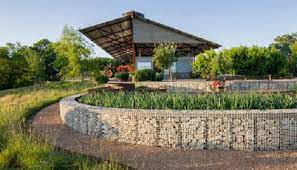
Gabions: Fostering Ecological Connectivity Across Landscapes
In the world of infrastructure development, the fundamental to protect and preserve the planet has become increasingly immediate. Gabions (gabiony), because of their adaptable software and eco-friendly features, offer a compelling solution to strike an equilibrium between system needs and environmental protection.
At its primary, a gabion (gabiony) is a straightforward yet ingenious structure comprising wire mesh baskets filled up with stones or other locally accessible materials. This uncomplicated building approach lends itself well to a number of applications, from maintaining walls to drainage systems, producing gabions a flexible instrument in the structure toolkit.
One of the more important features of gabions is the compatibility with environmental preservation goals. Contrary to typical structures for example definite walls or embankments, gabions enable natural processes to proceed unhindered. Their permeable design enables water to flow by way of, protecting against deterioration and marketing groundwater recharge. This function is particularly crucial in regions vunerable to surging or where by conserving all-natural hydrological solutions is vital.
Moreover, gabions can be built making use of locally sourced materials, reducing the environment effect associated with travel and removal. By making use of indigenous stones or reused aggregates, assignments can minimize carbon pollutants and alleviate strain on organic solutions, therefore fostering sustainability.
Additionally, gabions have the potential to boost biodiversity and ecological durability. The interstitial spots between rocks make microhabitats for various microorganisms, which range from plants to pests and little mammals. Moreover, the structural difficulty of gabion installations can mimic natural landforms, offering shelter and breeding reasons for animals.
From your sensible standpoint, gabions offer inexpensive options for infrastructure improvement. Their simple development method demands significantly less specific work and devices compared to traditional choices, causing reduced overall project costs. Additionally, gabions are highly versatile and can be simply modified or expanded to accommodate altering needs or site circumstances.
To conclude, gabions stand for a synergy of facilities and environmental stewardship, supplying a sustainable procedure for growth that reconciles individual requires with environmental dependability. By utilizing the natural characteristics of locally readily available materials, gabion components not just accomplish practical requirements but in addition contribute to the preservation and improvement of organic ecosystems.